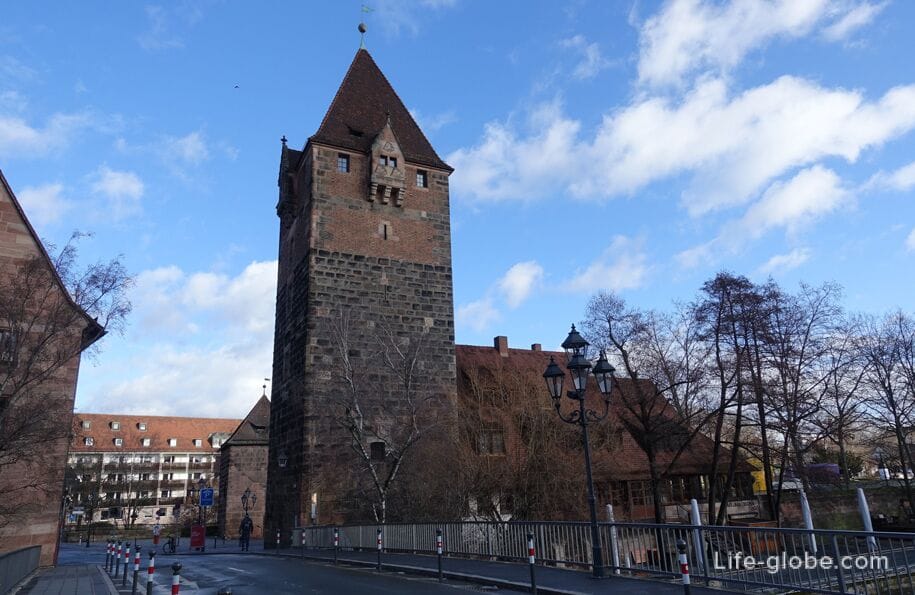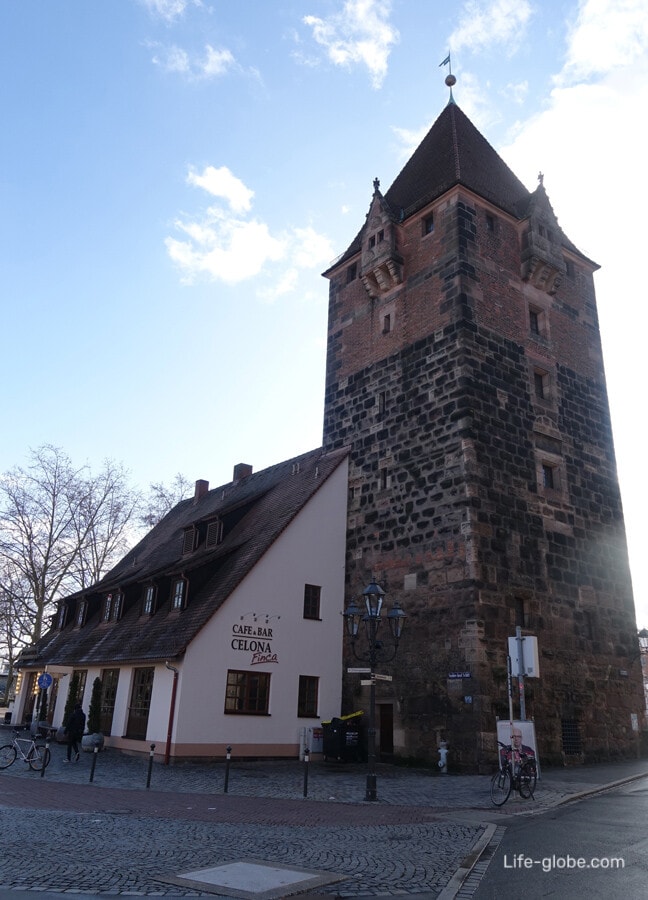
Debtors' Tower or Debt Tower (Schuldturm / Schuldturm) is a historical tower in Nuremberg, which is one of the main attractions of the city and part of the tourist route (tour) - The Historical Mile of Nuremberg (Historische Meile Nürnberg).
The tower, presumably, was part of the so-called penultimate city fortifications, and was built in 1323 under the supervision of master builder Konrat Stromer.
Together with the Clock Tower (Laufer Schlagturm) and the White Tower (Weißer Turm), which were also part of the city's fortifications, the Debtors' Tower is one of the few surviving towers of its era in Nuremberg.
After its construction, the tower was located within the city, and it was turned into a prison for debtors, and also used as so-called stupid houses for the mentally ill. Hence the name - "Debtors' Tower".
All the time it is more significant than the prison in the tower, it was used as a place for the imprisonment of male debtors - the men's debt tower. A little to the south was another tower, which was also used as a prison for debtors, but only for women. The Debt Women's Tower was demolished shortly after the transfer of the imperial city to Bavaria.
The Debtors' Tower completely burned down after the bombing of 1945 and was restored to its original form.

The most famous prisoners in the Debtors ' Tower were:
- Hans IV Stromer (called Bratwurst-Stromer) (1517-1592), alderman, city judge and member of the patrician Stromer von Reichenbach family, who was sentenced in 1559 to life imprisonment in the debtor's tower for embezzlement, disclosure of secrets and obscene language;
- Christian Ludwig Kaulitz (1693-1744), a calligrapher who died after 23 years of imprisonment in the debt tower.
Today, the Debt Tower is an architectural monument, has four facades, small windows, small bay windows in the upper part and a pointed roof with a spire.
Adjacent to the tower is a house in which there is a cafe-bar "Finca & Bar Celona" with a summer beer garden near the river bank.


The Debt Tower is located in the historical center of Nuremberg, on the Insel Schütt Island on the Pegnitz River, next to the historic building of the Hospital of the Holy Spirit (Heilig-Geist-Spital).
Two bridges lead to the tower across the river: the Hay Bridge (Heubrücke / Heibrücke) and the Hospital Bridge (Spitalbrücke / Spitalbrücke).
View of the tower and the Haymarket Bridge

View of the tower (in the center), the Hospital Bridge and part of the Hospital of the Holy Spirit (in the foreground)

All accommodation facilities in Nuremberg, including in the city center and near the Debtors' Tower, can be viewed and booked here